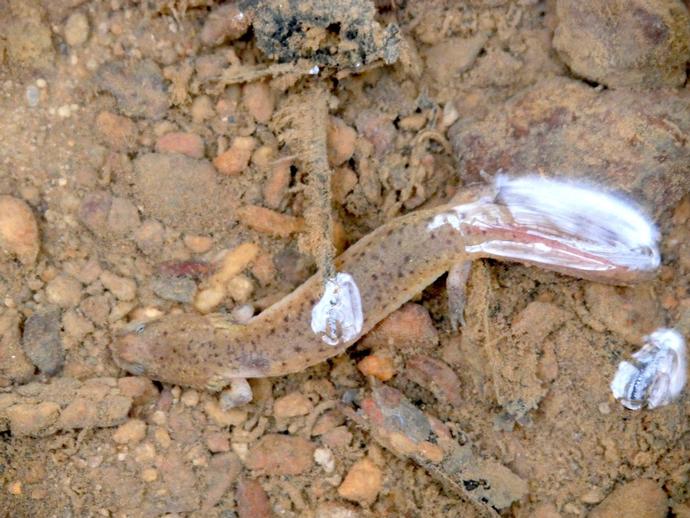September 20, 2020
Moving forward, #BenInNature will highlight a previously posted nature update every Saturday and Sunday, but don't fret fans! New updates will continue to be posted Monday - Friday! The following post was originally published March 29, 2020.
Many folks know that frogs (or at least a lot of species of frogs) don't emerge from their eggs fully-formed. Instead, they go through a larval stage, swimming around ponds and puddles as legless tadpoles. Salamanders, which are amphibians like frogs and toads, have a similar stage in their lives. Unlike tadpoles, larval salamanders have legs. They also have laterally flattened paddle-like tails to help them swim through the water and exposed gills that stick out from their necks. According to amphibian expert and biology professor Jason Gibson, this little guy is most likely the larval stage of a Northern red salamander (Psuedotriton ruber ruber), which is the same species as the bright orange salamander that we posted last week. According to the Virginia Herpetological Society, it takes nearly three years for a larval Northern red salamander to complete its metamorphosis into the terrestrial adult form. You can generally find these larval salamanders in small, clear streams and springs. Fun fact: If you try to take a photo of one without getting any glare off the water, it requires straddling the stream, bending yourself in half, and then nearly falling head-first into a creek. At least in my experience. #BenInNature
ABOUT #BenInNature
Social distancing can be difficult, but it presents a great opportunity to become reacquainted with nature. In this series of posts, Administrator of Science Ben Williams ventures outdoors to record a snapshot of the unique sights that can be found in the natural world. New updates are posted Monday - Friday, with previous posts highlighted on the weekends.
NATURE PHOTO IDENTIFICATIONS
If you discover something in nature that you would like help identifying, be sure to message us right here on Facebook with a picture (please include location and date of picture) and we'll have our experts help you identify it!

 Hours & Admissions
Hours & Admissions Directions
Directions

